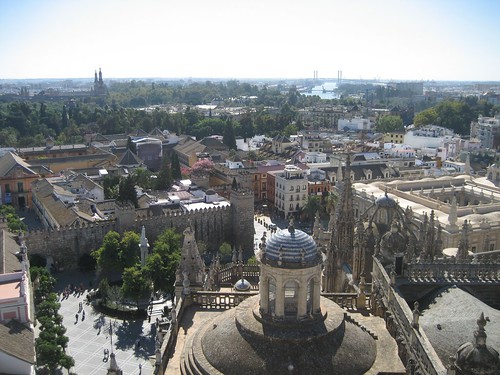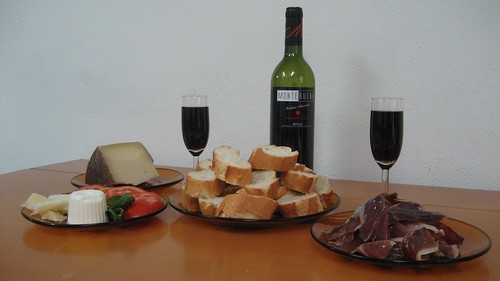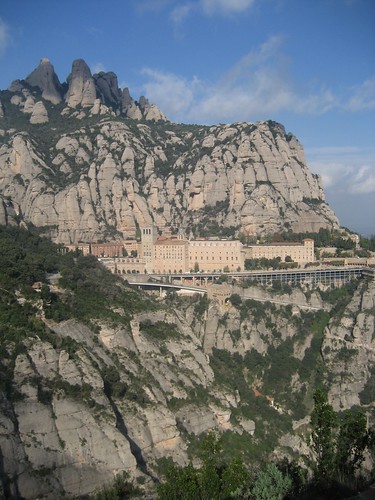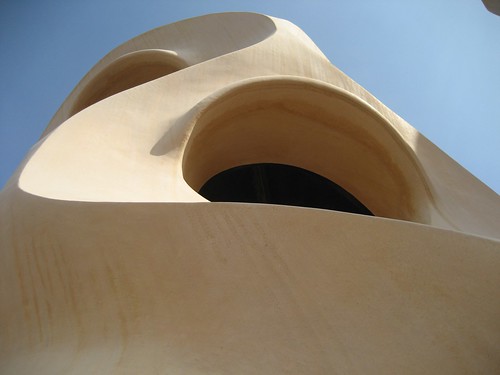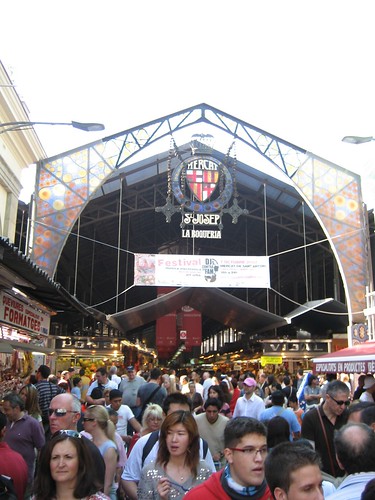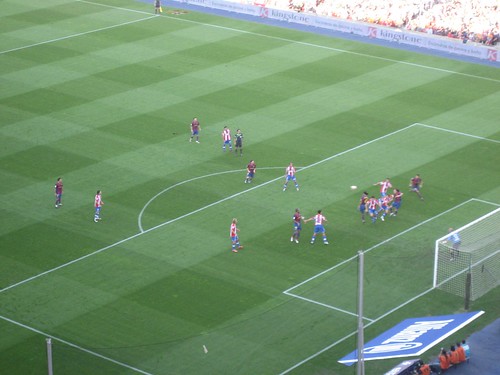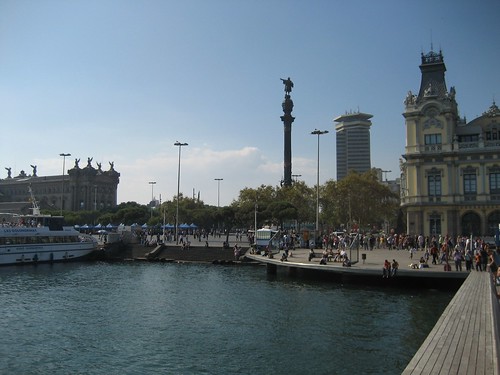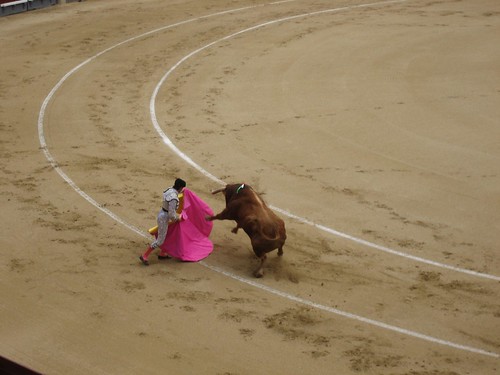
[
Note: originally written on October 2nd, but I haven't had internet access for a week, so it's a little late. And yes, this is what happens when I have too much time to write a blog entry, it becomes unnecessarily descriptive...]
Shortly after 5:00pm last Sunday night my sister and walked out of the Prado (one of Europe's largest museums, one that cannot be conquered in a single outing) and, for the first time since arriving in Spain, go our separate ways. This is our last night in Madrid and there's still one quintessential Spanish experience I haven't experienced yet: a bullfight. Despite an entire day of prodding, Kelsey is sticking to strongly to her convictions: she does not want to see it in person. So it's just me and my broken Spanish, sitting on a packed Metro, heading towards the home of bullfighting: Madrid's Plaza do Toros arena.
Stepping through the turnstile I really had no idea what to expect. Walking out of the stadium three hours later I still wasn't sure how I felt about what I just saw. Bullfighting is, if nothing else, a study in contrasts. The entire event, once a bastion of Spanish culture, is now frowned upon by manly locals. And although overall attendance is rising, the increase is due in large part to tourism. Barcelona outlawed bullfighting a few years ago (with the rest of Catalunia following suit) and it's easy to imagine this trend continuing throughout Spain — eventually. But not yet, bullfighting is still alive and well in Madrid. Matadors are some of the highest paid entertainers in the world, with the top performers earning nearly 200,000 Euros for an afternoon's worth of work.
The term "bullfighting" is a misnomer, as well. This is not a man vs. beast fight, it's more aptly described as an artistic sacrifice. In the end the bull will die and the matador will walk away untouched. (For example, in over 200 years of bullfighting in Sevillia, just 30 matadors have been killed.) Bullfighting isn't really a sport, either, but a performance. Reviews of the event are written up in the entertainment section newspapers, not the sports section. Matadors are judged on how close they can get the bull to storm past them, standing still as the bull lunges in vain at the small red cape. In addition, it seems that bonus points are awarded for good style.
Of course, "good style" is a matter of personal (or at least cultural) opinion. [
Apologetic preface: I don't really like putting things in a male/female sexist light, but it's an easy analogy and gets the point across.] And no matter how you slice it, standing face to face with a ton of angry bull is an impressive and (dare I say) manly proposition. In an apparent attempt to diffuse this unbridled manliness, matadors proudly exude blatant effeminatity (and this is not a word, according to my friends at Webster. It's good to know I'm stretching the boundaries of the English language). Our hero slowly struts around the ring, sporting a uncomfortably tight, sequined leotard suit that would make any Barnum and Bailieze trapeze artist jealous. Every calculated step, every swish of the cape, and (especially) every flick of the head is executed with just flamboyant gusto that it's hard not to smile and chuckle.
Until he pulls out the sword for the fatal blow. [
Editor's note #2: things may get a little gory below. Queasy readers are advised to skip the rest of this post.] An ideal strike is delivered just once, burying the sword through the ribs and into the heart, killing the bull quickly and without much spectacle. Sadly, this doesn't happen all the time (or even most of the time). Often the matador is unable to angle his sword properly, so the blade only goes in a few inches (or bounces off completely). One unlucky matador failed on 5 consecutive attempts, prompting unhappy whistles from the crowd. When the final act get to this point the bull doesn't have any fight left in him. Head bowed and no longer responding to the taunts of the matador, the bull has signaled that it is no longer a responsive target. At this point the matador simply lines up the sword along the bull's spine, where a quick strike finishes the job instantly.
However, sometimes things don't go according to plan. The first bull I saw killed was an especially graphic experience. The sword appeared to be delivered correctly, but the bull did not calmly lie down, like he's supposed to. Instead he staggered to the right, then back to the left. Then he slowly jolted forward, taking stalky, unsteady steps. The matador followed behind him, waiting for the beast to fall so he could retrieve his sword. But the bull continued on. Blood started trickling out of his nostrils. The bull grunted, coughing up mouthful of blood. A woman in front of me turned away and closed her eyes. Blood started flowing freely from the bull's mouth, leaving a dark red trail as the bull continued to stagger on. His front legs gave out and he fell head-first into his own pool of blood. But his back legs continued to jerk, unwilling to give up. The bull finally toppled over, legs still quivering, blood still flowing. I was forced to turn away as well, unprepared for anything like this.
Fortunately, the other five bulls followed the script and died when they were supposed to (six bulls are killed in a traditional bullfight). But I was unable to shake the initial experience from my mind. A strong, determined, but ultimately doomed bull, pincushioned with barbs and a sword, refusing to die. It was... not right. Not fair. And certainly not humane. It's not something I will watch again. It's not an experience I'll recommend, either. This is not something you have to see to believe.
If that's not descriptive enough for you check out
the pictures.
